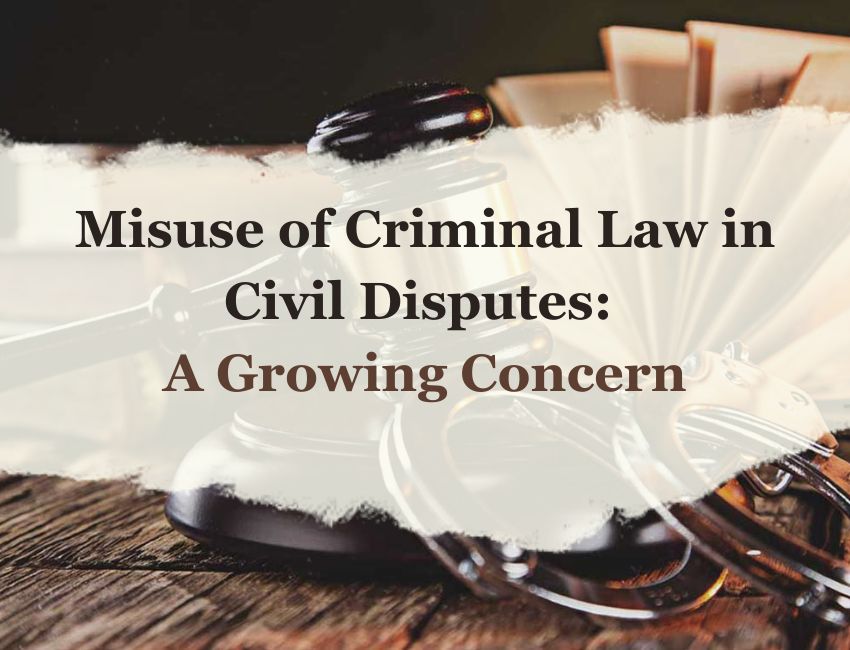Bhaskaran Nambiar, J.@mdashThe appellant was an applicant for permission / licence to install a 30 H.P. electric machinery for his stone crushing plant. Permission from the executive authority is required under the Kerala Panchayat Act and the Rules. The District Medical Officer of Health issued a no objection certificate reading thus:-
There is no objection from the public health point of view for issuing a licence to Sri M. Ibrahimkutty for running a stone crushing unit in Sy. No.10/4C 109/4B of Keezhmad of Keezhmad Panchayat as recommended by the Medical Office-in-charge, P.H.C. with the following conditions.
1. The stone crushing machine should not be installed within a radious of 75 metres from any dwelling house
Sd/- Special Grade Executive Officer.
The site was found suitable from the fire point of view as seen from the certificate issued by the Fire Force Divisional Officer also. The executive officer granted licence to last till 31/3/1985. This was renewed for the succeeding year and the current licence expires only on 31-3-1986. Aginst the initial grant of licence, there. was a mass petition by the residents of the locality and the Deputy Director of Panchayats passed an order confirming the grant. Aggrieved, two persons, Shri V.L. Eapen and Shri M.A. Abubacker filed revisions before Government. The Government set aside the order of the Deputy Director and also cancelled the licence by an order dated 23-3-1985 (Ext P6) Government stated its reasons thus:-
Government have considered the case in all its aspects. As per the application form for the construction/installation of factory/ workshop etc. appended to the Kerala Panchayat (Licensing of Dangerous and Offensive Trades and Factories) Rules, a minimum distance of 100 metres should be maintained between the site of the factory/workshop/work place and the nearest dwelling house. As the application form forms part of the Rules the minimum distance specified in the application form appended to the Rules is binding. In this case the distance from the stone crusher unit to the residential houses of two of the petitioners, Sri Mohan and Sri Aboobacker areonly 90.90 meters and 91 30 metres. The minimum distance prescribed under the rules has not been satisfied here. The licence given by the Panchayat is liable to be cancelled for this reason alone. The revision petitioner-1 pointed out that the mass petition were forwarded also to the District Medical Officer and the Divisional Fire Inspector. Notice could have been given at least to a few of the petitioners in the mass petition and opportunity for. presenting their case could have been offered during the site inspection. This was not done. The Deputy Director had even refused opportunity to one of the petitioners who wanted on his accord to represent his case. Equity and fair play demanded opportunity to Sri Varkey for being heard and acceptance of the petition he wished to submit. The contention that this was not required under the Rules will not stand. It is clear that the mass representation dated 3-9-1984 and the opinion of the local people were not given due consideration by the Deputy Director. In the circumstances, the proceedings No. K. Dis(c) 9762/84 dated 11-1-1985 of the Deputy Director of Panchayats, Ernakulam is cancelled. It follows that the licence issued by the Keezmad Panchayat to the counter petitioner for the installation of the stone crusher unit will also stand cancelled.
The appellant filed a writ petition challenging this order. A learned single Judge dismissed the same observing thus:-
xx A reading of the relevant rule along with the provisions contained in Clause 6 of the Form prescribed under the Rules make it abundantly clear that the distance between the factory premises where the industrial establishment is to be started and the residentail area must in fact be 225 metres, after 1978.
XXX XXX
It is true that the Medical Officer and the Divisional Officer, Fire Force, have issued the no-objection certificates. These certificates alone will not help the petitioner to contend for the position that he is entitled to get the licence. He should also establish that the distance between the factory and the dwelling places is 225 metres. The finding however, is that the distance between the premises where the petitioner proposes to establish the crushing machine and dwelling houses is not even 100 metres. Ext. P6 therefore is beyond challenge.
This appeal is filed against this decision.
2. The main contention advanced on behalf of the appellant is that the only reason given by the Government that there is a distance rule which prohibits the starting of a stone crusher unit within 222 ft. of a residential building was patently wrong and that the particulars furnished in the application form prescribed for the purpose cannot be construed as a rule insisting on a distance tor the purpose.
3. It is true that the relevant rules (Kerala Panchayats (licensing of Dangerous and Offensive Trades and Factories) Rules, 1963, do not prescribe that a ''dangerous and offensive trade'' should be conducted only beyond a particular distance from any residential building It is not disputed that the appellant applied for a licence in respect of ''a dangerous and offensive trade'' within the meaning of these rules But the rules insist that an application has to be filed in the prescribed form and that the authority "shall consult and have due regard to the opinion of the District Medical officer of Health" and shall also consult the Divisional Fire Officer. These conditions have also to be satisfied. Even then, the authority can refuse permission if "it is of opinion that such construction, establishment or installation is objectionable by reason of the density of the population in the neighbourhood or that it is likely to cause a nuisance", (Rule 3 (b).
4. In the application form prescribed, column 6 reads thus;-
Distance between the site and residential area. (Specify whether the distance between the Factory premises and dwelling houses is nor less than 225 feet except in areas declared specifically as Industrial area".)
Column 7 runs thus:-
Distance from the nearest source of community water supply.
5. The application form prescribed is part of the rule. The particulars to be furnished are thus on the basis of those rules. The rules enjoin that the licensing authority has to take into consideration several factors and then decide whether the license should be granted or not. The facts furnished in the application have necessarily to guide the authority in the exercise of its discretion. These particulars can have no greater sanctity. It cannot be said that any matter for which a separate column is provided in the application automatically enshrines a statutory prohibition. The particulars directed to be furnished by the applicant thus cannot be deemed to be any prohibitory rule based on distance.
6. The reasoning of the Government that the distance specified in the application form is binding presupposes that a prohibited distance is specified in the rules. When the rules speak of no prohibitory distance, a prohibition cannot be implied from the contents of the application or the particulars to be furnished therein. We make it clear, however, that it is always open to the licensing authority or the appellate or revisional authority to consider whether in a particular case, a manufacturing or industrial unit can be located within 225 feet or 100 metres of any residential building.
7. Assuming that the particulars in an application form can be treated as incorporating a prohibitory rule regarding distance, colum 6 of the form extracted above cannot be understood as laying down any such restriction. 9. Right to carry on trade is a fundamental right. However, the right is not absolute; it is subject to reasonable restrictions. A rule which prohibits the carrying of a dangerous and offensive trade only beyond a prohibited distance has thus the support of constitutional reasonableness. If the distance so fixed has absolutely no relation to the object sought to be achieved, of course, that particular provision will have to be struk down as unconstitutional.
8. Prohibition in respect of a trade has to be express and explicit. It has to be definite, and defined. It is not a matter of inference to be implied from surrounding circumstances or gathered from the particulars to be furnished in the prescribed form. It is important to note that whenever the rule making authority intended to provide a distance rule to prohibit a trade, a specific rule was provided for the purpose.
9. Thus, under the Kerala Panchayats (Burial and Burning Grounds) Rules, 1967, rule 5 provides thus:-
No new burial or burning ground to be located within 50 meters of a dwelling place.- No burial or burning ground which is not in existence at the commencement of these rules shall be located within a distance of fifty meters from any human habitation:
Provided that in the case of concrete vaults the. distance shall be twenty five meters from any human habitation.
10. Similarly, the Kerala Panchayats (Conduct of Dispensaries) Rules. 1966, Rule 4 provides: -
Restriction regarding location and building for conduct of dispensaries - xxx
No dispensaries shall be within a distance of 3 km from any other dispensary run by Government or a local authority or a missionary association or a recognised organisation.
11. So also in Kerala Panchayats (Public and Private Markets) Rules, 1964, wherein Rule 26 provides thus:-
26. Distance between markets.- A Panchayat shall not except with the prior sanation of the Director of Panchayats open a new public market nor issue licence for a private market if the site for such market is within a distance of three kilometres from a public or private market already existing or functioning in any Panchayat under the Kerala Panchayats Act:
Provided in the case of an evening market such distance limit shall be 1.5 kilometres from any other existing evening market.
12. In these circumstances, when there is no express rule prohibiting the installation of a stone crushing unit within a particular distance of a residential building, the Government was wrong in stating that a distance rule prevented the grant of a licence.
13. Even then, we feel that a writ of (sic) does not follow automatically. If, considering the nature of the trade, its dangerous impact on the life and activities in a residential area, the Government decide that a stone crushing unit with 30 H P. cannot be allowed to be installed within 225 feet or 100 meters of a residential building, this court cannot interfere with the Government Order which will in effect allow an offensive trade to be conducted within a dangerous distance. (We note that 225 feet mentioned in column 6 of the form has been subsequently amended to read as 100 metres).
14. The nuisance caused by the working of a 30 H P, engine to crush stones is a legal injury to the neighbouring residents. If she Government feel that the residents in the neighbourhood within 225 feet or 100 metres have to be protected, this court will not exercise its jurisdiction under Article 226, without being unmindful of the injustice that is likely to be caused
15. Moreover, the Government have held that the order of the Deputy Director confirming the grant was bad in that the basic principles of natural justice have been violated. We have not been shown that this reasoning is bad. Before the Government, there were two revisions, one by Shri V.L. Eapen and another by Shri M.A. Abubacker. The appellant impleaded only M.A. Abubacker. After the dismissal of the writ petition, in appeal be made an application to implead Shri. Eapen,as a specified ground was raised by the contesting respondents. The failure to implead Shri Eapen when the writ was filed is also fatal to the Original petition.
In the result, the dismissal of the O.P. was justified and we. see no ground to allow the appeal. The Writ Appeal is dismissed but, in the circumstances, there will be no order as to costs.

